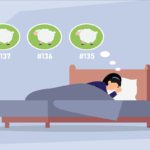It is not “all in your head” or “just that time of the month.” Endometriosis is a physical condition with real and possibly chronic or debilitating symptoms. Because the pain of endometriosis often occurs or worsens around a woman’s period, many people, or worse, doctors may ignore this as “just cramps.” A confirmed diagnosis of endometriosis may come as a relief to women who thought—or were told—their suffering was normal. The ease with which these symptoms are often ignored or misdiagnosed points to a larger issue of women’s pain being dismissed.
Endometriosis and the Reproductive System
Endometriosis is a condition where tissue similar to the lining of the uterus grows outside the uterus, primarily affecting the female reproductive system, including the uterus, fallopian tubes and ovaries.
During the menstrual cycle, the uterus prepares to host a fertilized egg. If this doesn’t occur and there is no pregnancy, during the period, or menstruation, the lining of the uterus (endometrium) is shed as blood and tissue.1
Because endometriosis growths are tissue similar to the uterine lining, it continues this swell and bleed cycle. Since this occurs outside the uterus, the shed tissue can then become trapped in the body which causes pain, irritation and other problems.
Endometriosis Symptoms
Endometriosis is not uncommon, estimated to affect more than 11% of American women between 15 and 44. It is especially common among women in their 30s and 40s.2 The main symptom of endometriosis is pain, though the type of pain can vary.
One common symptom is painful periods, but this shouldn’t be confused with run-of-the-mill cramps (which can also be quite painful). The pain associated with endometriosis is often severe, beginning before and extending through the period and becoming worse over time. Endometriosis can also cause chronic pain in the pelvis or lower back, pain during or after sex, intestinal pain, and painful bowel movements or urination.3
The pain of endometriosis is bad enough, but endometriosis can also make it more difficult to get pregnant. Endometriosis growths may prevent eggs from leaving the ovaries.4
Difficult Diagnosis
Suspicion of endometriosis will often be based on reported symptoms, most likely the location and timing of pain. However, Mayo Clinic reports that “the severity of your pain may not be a reliable indicator of the extent of your condition. You could have mild endometriosis with severe pain, or you could have advanced endometriosis with little or no pain.”5
A pelvic exam or ultrasound may be used to further investigate an endometriosis diagnosis. However, these methods may be limited and indefinite. They will likely only reveal large cysts caused by endometriosis and not identify smaller growths.6
Surgery is the only way to confirm an endometriosis diagnosis. Often a surgeon can do this using a minimally invasive procedure known as laparoscopy. This involves inserting a tiny camera through a small cut in the skin to observe and possibly take samples of the endometriosis growths.7
There is no cure for endometriosis, but there are treatments available to manage the symptoms. Hormones or hormonal birth control may be prescribed to help manage menstruation. Surgery is also an option for severe symptoms or fertility problems.8
Pain and Gender Bias
Endometriosis’ general symptoms, similarity to other conditions and difficult diagnosis highlights the concerns around the well-documented medical bias against women’s pain. From chest pain to reproductive pain to surgery, anecdotal accounts and scientific studies find that healthcare providers are more likely to see women’s pain as an overreaction.
The 2022 KFF Women’s Health Survey found that 38% of women had at least one negative experience with a health care provider. This included 29% percent that reported that their doctor had dismissed their concerns and 15% that said a provider did not believe they were telling the truth.9
Whether a heart attack misdiagnosed as heart burn or endometriosis dismissed as PMS, this bias has led to delayed care, unnecessary suffering and sometimes missed diagnoses altogether for a variety of conditions. It’s important to listen to your body and find a doctor who will listen to you. Advocate for yourself, bringing in others for support if needed, and get the treatment and care you need.10
1 Office on Women’s Health, “Your menstrual cycle”
2 Office on Women’s Health, “Endometriosis”
3 Office on Women’s Health, “Endometriosis”
4 Mayo Clinic, “Endometriosis – Symptoms & causes”
5 Mayo Clinic, “Endometriosis – Symptoms & causes”
6 Mayo Clinic, “Endometriosis – Diagnosis & treatment”
7 MedlinePlus, “Endometriosis”
8 Office on Women’s Health, “Endometriosis”
9 KFF, “Women’s Experiences with Provider Communication and Interactions in Health Care Settings: Findings from the 2022 KFF Women’s Health Survey”
10 The Washington Post, “From heart disease to IUDs: How doctors dismiss women’s pain”













